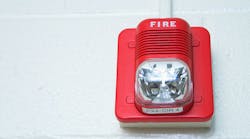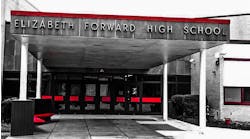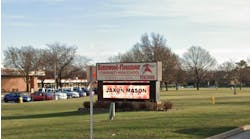Recent talk about bolstering school safety has focused primarily on protecting campuses from gun violence. But schools and universities have to continue to be vigilant about fire safety; campuses are far more likely to be victimized by a fire than by armed attacks.
Fire departments in the United States responded to an average of 6,260 structure fires a year in education facilities from 2005 to 2009, the National Fire Protection Association (NFPA) says. Those fires resulted in an average of 85 civilian injuries a year and annual property damage of $112 million. In those same years, fire departments responded to an average of 3,840 structure fires in residence halls, fraternities, sororities and barracks. Those fires led to an annual average of three civilian deaths, 38 injuries and $20.9 million in property damage.
One of the key tools in making sure students and staff know what to do and how to escape harm if a fire breaks out is the fire drill. The NFPA recommends that schools stage fire drills at least once a month when classes are in session.
The association has several tips for conducting school fire drills:
•A drill alarm should sound the same as an actual fire alarm so that all those in the building can recognize the sound and respond.
•Everyone in the school facility should take part in the drill.
•For students with special needs, schools should assign an adult or a student to assist them. “Fire drills are a good opportunity to identify who among the student population requires extra assistance,” the NFPA says.
•An orderly exit from the school building is more important in a drill than speed.
•After students and staff have left the building, they should remain outside at a predetermined location until officials give an “all clear” to re-enter the school.
•Staff members should use student rosters to ensure that everyone is accounted for.
•Schools should hold fire drills at both expected and unexpected times and under varying conditions. This will help students and staff respond appropriately in an actual emergency.
In addition to carrying out regular drills, schools should have staff members inspect all building exits every day to make sure that stairways, doors and other exits are unblocked and working correctly. Staff members should become familiar with the facility’s fire-protection system, including the locations of alarm pull stations and sprinkler systems. Every room in a school should have a map posted that identifies two ways out of the building.
On college campuses, the NFPA says, institutions should provide, and students should seek out, housing that is equipped with a sprinkler system. Students should make sure they can hear a building’s fire alarm from their residence hall rooms. In addition, smoke alarms should be installed in rooms where students sleep as well as other parts of the living area.
The U.S. Fire Administration (USFA), noting that cooking is the cause of 83 percent of university housing fires, stresses that residents should never leave cooking unattended. Schools should make sure that cooking is done only in permitted areas.
As with pupils in elementary and secondary schools, higher-education institutions should take steps to ensure that students in residence halls are aware of and have practiced escape plans that include at least two ways out of a facility.
Kennedy is staff writer for AS&U.


